Adobe City? Yes, if you work in the arts and media industry, or are a budding photographer like me, or have in fact simply attempted to view a PDF document online, then you’ll only know the word Adobe in relation to software programs such as Illustrator, Photoshop, or Acrobat.
However, if you know a bit of Spanish or have worked in construction, you’ll know that Adobe also refers to a specific type of mud brick – a natural building material made from sand, clay, water, and some kind of fibrous or organic material (sticks, straw, and/or manure).
So, this article is about an entire city that was built around 1300AD and constructed solely of mud bricks, the ruins of which are located approximately 5 kilometres west of Trujillo, in north-western Peru.
Chan Chan was the capital of the Chimú Empire, covered 20 square kilometres of land, and is recognised historically as the largest pre-Columbian city in the Americas. An estimated 60,000 inhabitants lived there, and the city also housed a vast wealth of gold, silver and ceramics.
It is possible to hop in a combi to the ruins, but as there are a number of other ruins nearby that you can also visit with the Chan Chan ticket, we decided it would be a lot easier to see them all if we booked a tour. We’d also read in our guidebook that thieves are known to wander the grounds of some of the more isolated sites, and we didn’t wish to take any unnecessary risks with ourselves or our valuables.
The tour we chose included a visit to Huacas del Sol y de la Luna in the morning, and Huaca Esmeralda, Museo de Sitio Chan Chan, and Chan Chan itself in the afternoon, with a break of an hour for lunch in Trujillo in between.
Huacas del Sol y de la Luna (the temples of the Sun and the Moon) are more than 700 years older than Chan Chan, and are attributed to the Moche period. Yet despite their age, archeologists are still in the process of uncovering numerous friezes within the smaller structure, Huacas de la Luna, some of which have been perfectly preserved by the later levels built around them.
There is also a relatively new museum on-site, the Museo Huacas de Moche (admission 3 soles), which is home to many of the objects that have been excavated from the two temples. My only complaint was that we were given just half an hour in the museum, which was sufficient time to study barely a fraction of the objects on display here.
Huaca Esmeralda, halfway between Trujillo and Chan Chan, was an interesting first stop after lunch. It was accidentally discovered (the temple was buried by sand) by a landowner in 1923, and although the El Niño of 1925 and the floods and rains of 1983 have eroded the structure somewhat, it is still possible to make out the characteristic Chimú designs of fish, seabirds, waves and fishing nets.
Unlike the Incas who worshipped the sun, the Chimú were seafarers and venerated the moon instead, due to its control over the ocean tides, and this is the reason that Chimú structures are covered in aquatically-inspired carvings.
Chan Chan is no exception.
We arrived at this immense ruined citadel mid-afternoon. Although the ancient capital consists of ten walled cities, most of these are in the process of being studied and restored. We visited the Tschudi Complex (the only one of these 10 that has been partially restored and is officially open to the public), which contains Ceremonial Courtyards, Audience Rooms, a Military Sector, Mausoleum, and an Assembly Room.
With the knowledge that the Tschudi Complex was only a tenth of the entire capital came the realisation of just how vast an area Chan Chan covered. Put Machu Picchu and the pre-Incan city of Kuélap together and you still only have somewhere less than half the size of Chan Chan. Yes, Machu Picchu is incredibly well-preserved, and with Kuélap’s elevation comes some of the most spectacular panoramic views of the northern Peruvian countryside, but Chan Chan wins out in the sheer size of its construction.
Chan Chan flourished until around 1470, when the Incas conquered the city, broke up the Chimú Empire, and brought many of its craftsmen to their own capital, Cusco. Although the city had been largely abandoned by the time the Spanish conquistador Francisco Pizarro arrived, much of the wealth still remained in the form of precious metals that adorned the walls and other architectural features. So the Spaniards sought to extract every trace of gold and silver, before leaving Chan Chan to the mercy of the weather.
Unfortunately the mud walls of the city have been severely eroded over time (they once stood more than 10 metres high), which means that you need a rather active imagination to visualise the capital in all its former glory. What’s more, countless shelters have been tacked up everywhere (presumably to protect the city from the elements) that it not only detracts from the beauty and authenticity of the site, but it also makes photography incredibly challenging. I was able to take detailed zoomed shots of the geometric wall carvings and friezes, but in many of my wider angle shots, the ruined city simply looked like a construction site. I can only assume that the famous photographs I’d seen of Chan Chan were taken before the decision was made to introduce these shelters.
A lot of the wall decorations and aquatic-themed wall carvings within the Tschudi Complex have now been restored, however a few of the rougher-looking original designs have been left alone, allowing you to make easy comparisons between the two. Whilst I loved the detail and visual appeal of the contemporary restorations they somehow they lacked the character of the originals.
It’s clear that a lot of restoration work has taken place here (certainly in more recent years at least) and Chan Chan is undeniably a magnificent feat of construction, especially when you compare its size to the likes of Machu Picchu and Kuélap, but don’t come here expecting too much.
The city has suffered a lot of erosion, and it is incredibly difficult to imagine it as little more than it is today. The modern shelters (although an essential feature in the protection of Chan Chan) are also an obstacle with regards to your visual appreciation of what remains of the city.
I would definitely still urge you to visit, but possessing the hindsight that I now do, I’m not sure I would decide to take a tour. Yes it was interesting to be able to combine our visit to Chan Chan with a number of other ruins in the area, and to have an English-speaking guide to fill in our gaps of knowledge, but the allocated time we had at each individual site (especially Chan Chan due to the sheer size of the place) just didn’t feel sufficient enough.
Personally I would set aside the best part of a day, or at least a whole morning or afternoon, in which to explore Chan Chan. By all means pay for an on-site guide, but make sure you leave yourself enough time afterwards to revisit those areas you were especially intrigued by, and to take all those photographs you wanted to.
Its beauty may not be immediately obvious, but take the time to get to know Chan Chan and you may just change your mind.
Where we stayed
Munay Wasi, Colón 250, Trujillo
Pros: Central location 2 blocks from the Plaza de Armas, comfortable rooms, hot showers, good breakfast.
Cons: Although only a minor complaint, we did not end up with the type of room we initially booked. I blame the scatty owner!
Prices: 70 soles (£14.93) per night for a twin room with private bathroom.
Where to book: Booking.com
Where we ate
Adan’s Grill – small restaurant & simple decor but the food is of good quality and tasty. I had the Menu Marino for 15 soles, which consisted of Ceviche, Chicharron de Pescado, and a kind of risotto with octopus.
El Sol Vegetarian Restaurant – packed full of locals and incredibly cheap. The set menu costs 5 soles (£1.07) and will buy you soup, a main course, and a drink.
If you like this article, please follow along on Facebook or Twitter.
This is part of the #SundayTraveler link up, the spot to be to get the lowdown on all things travel.


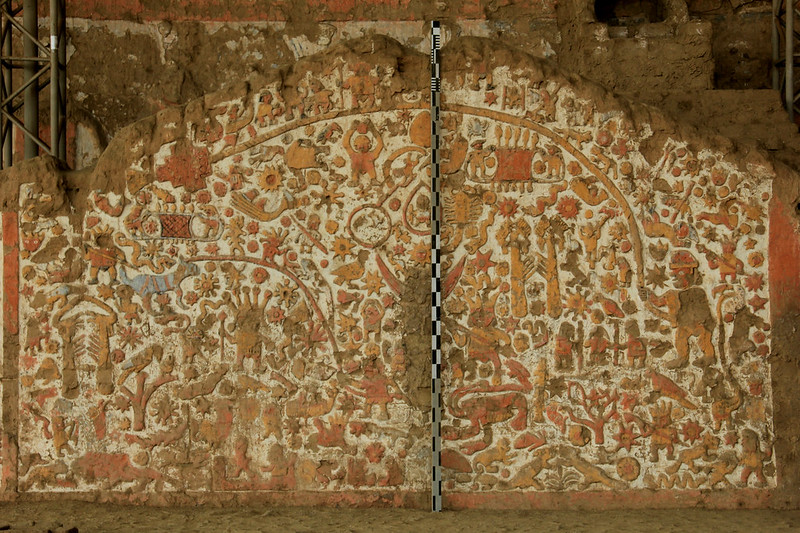
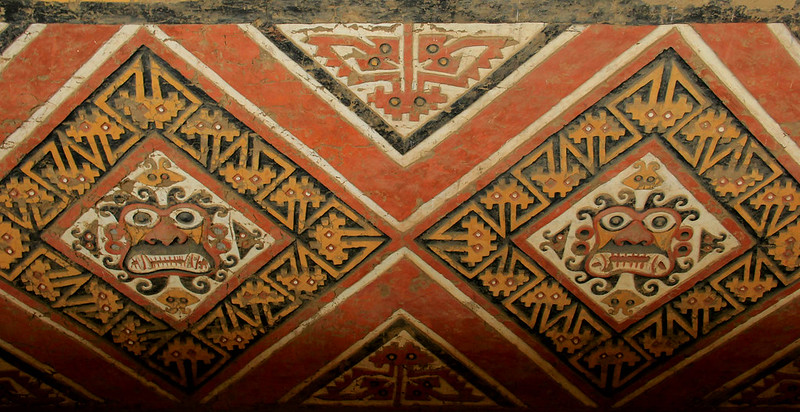
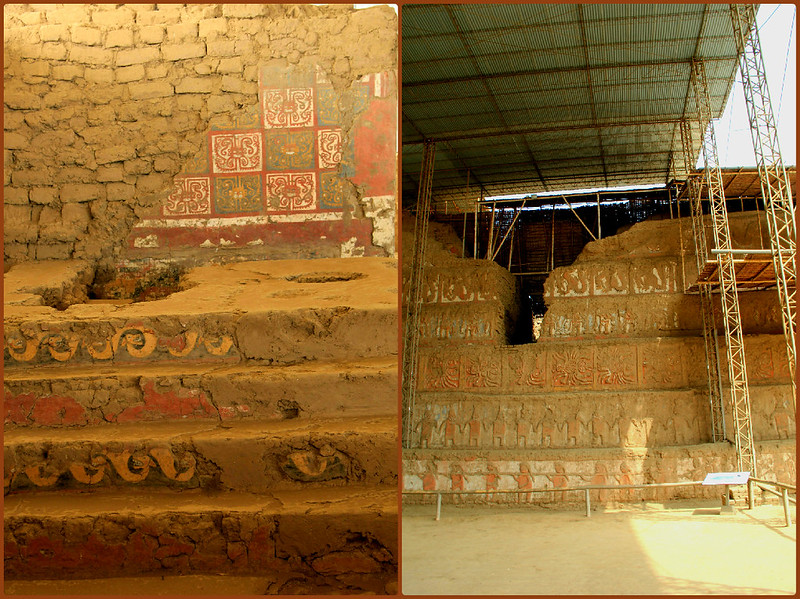
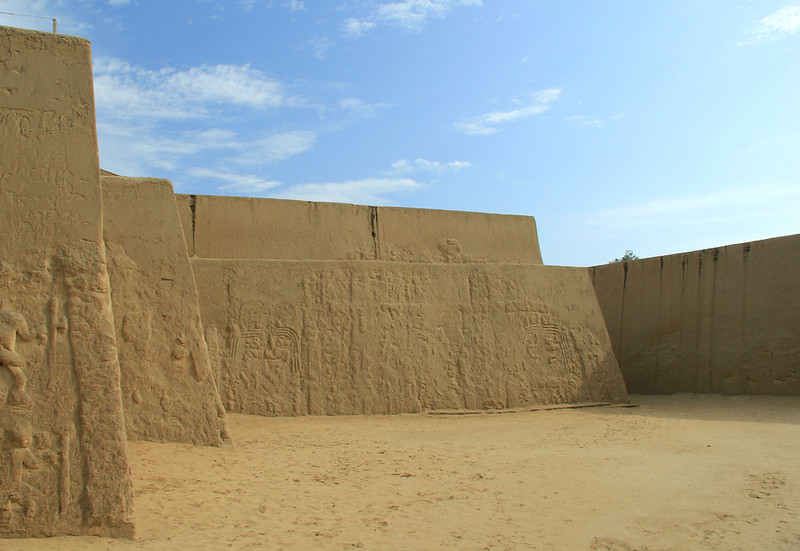
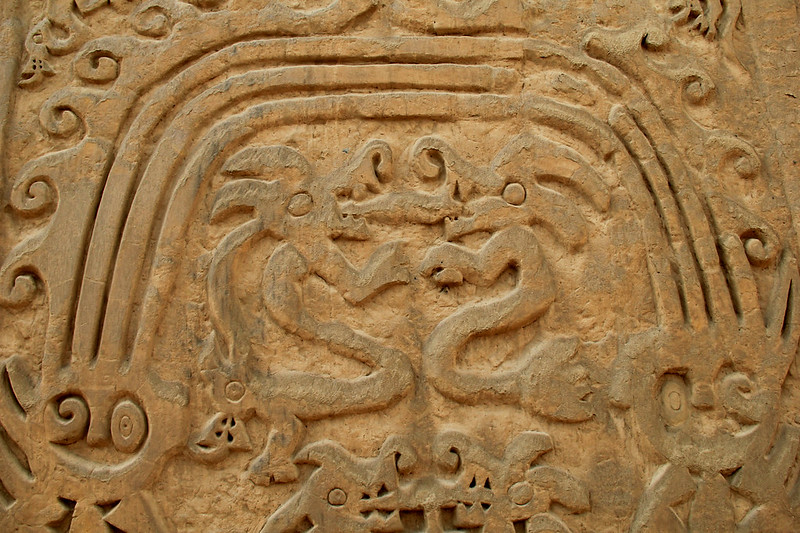
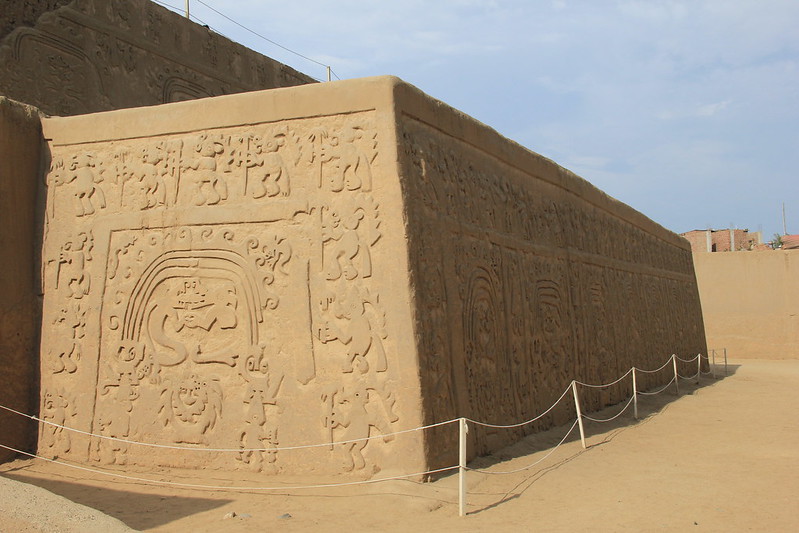
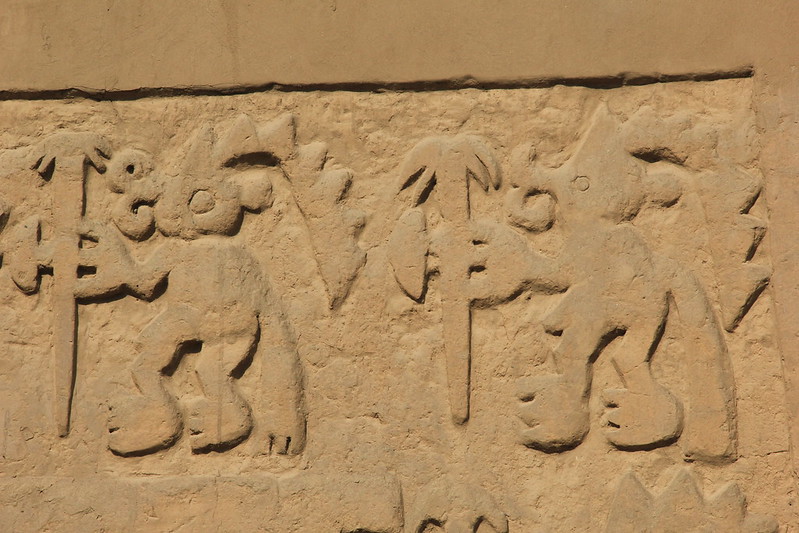
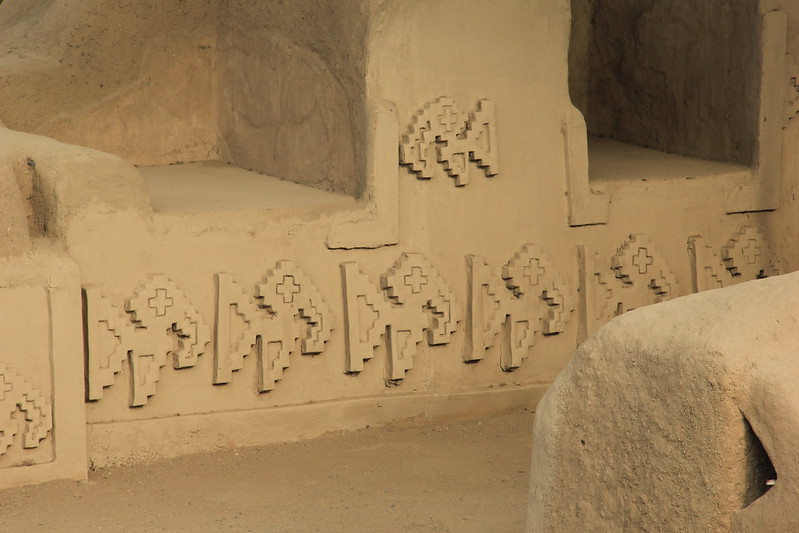
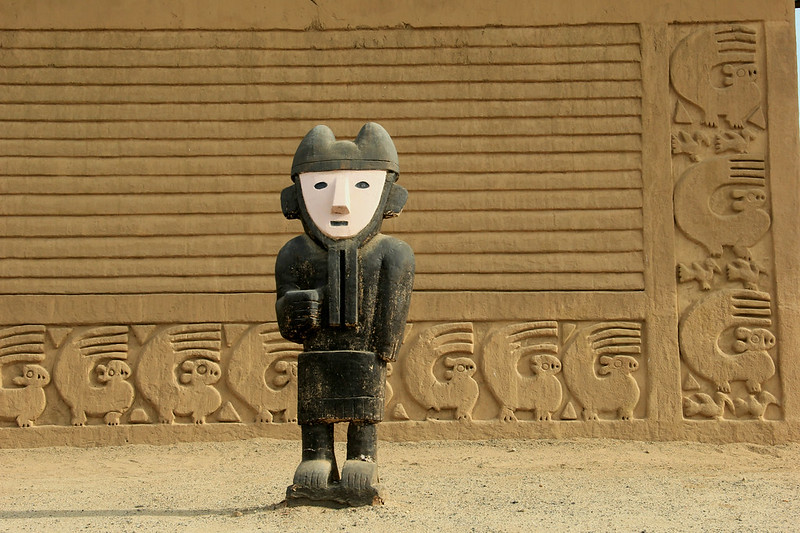
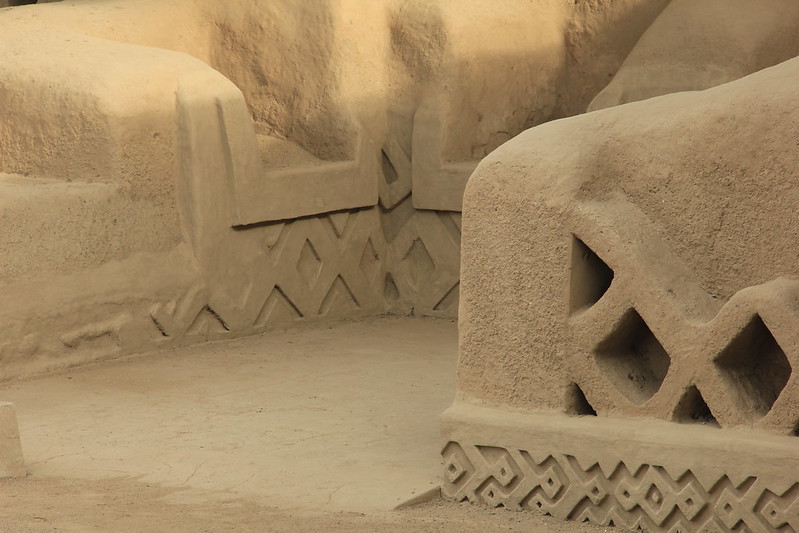

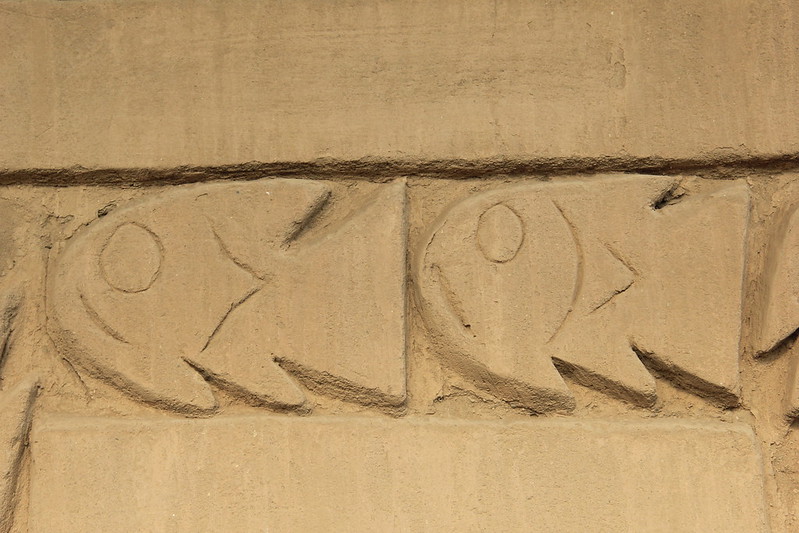
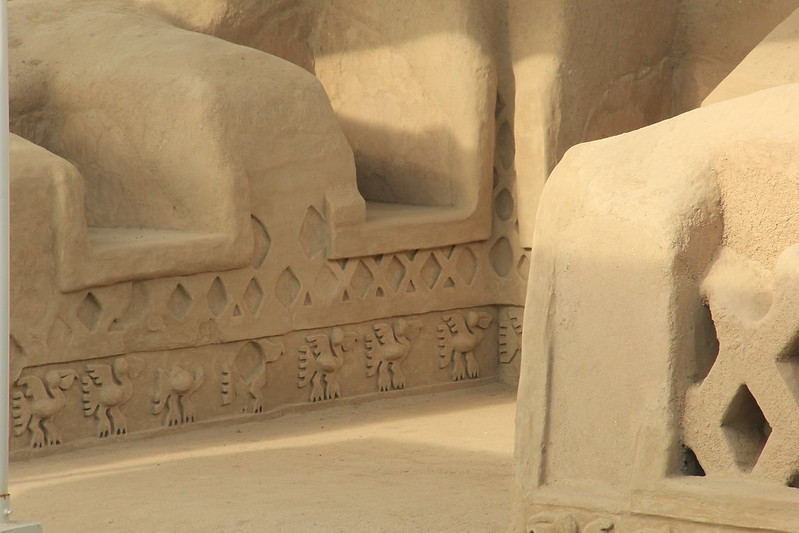
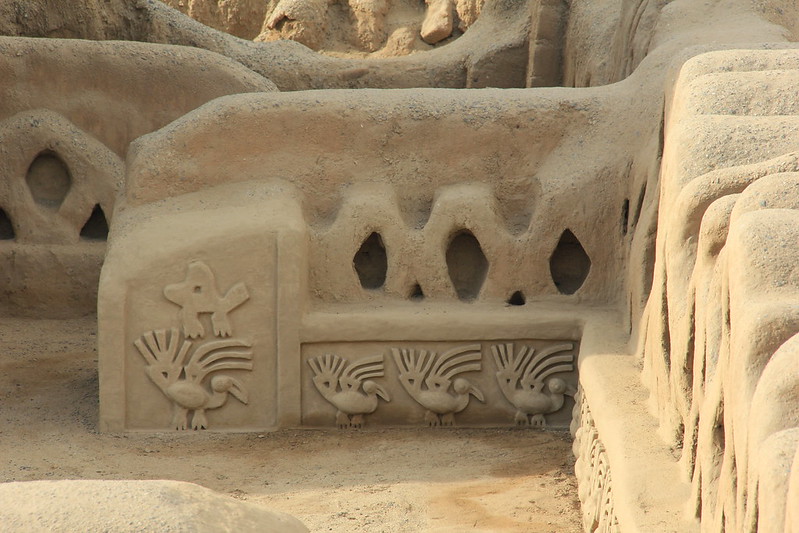





8 Comments
Oh wow, this is SO cool! It just blows my mind that people could do so much with mud, and that it could last for so long. I would love to see it in real life!
Yeah, it’s pretty amazing stuff! Would have loved to have seen it all those years ago 🙂
This place really looks phenomenal; I’m dying over the wall carvings and colors, especially. I got a history lesson and some good eye-candy while reading your post 🙂
Haha, happy to be of assistance 😉 Yeah it’s amazing what they could do centuries ago, without any of the tools or mechanical equipment that’s widely in use today.
Wow! Talk about intricate! Who knew mud could be so versatile.
P.S. I was totally one of those people who only knew Adobe in the context of software. Then travel happened 🙂
Yeah me too Adelina 😉 My boyfriend Stu (who works in construction back home) was familiar with Adobe in the mud brick sense, but I didn’t have a clue!
Wow, I had honestly never heard of the place, and I have done a ton of research on Peru lately. Looks like a great place though, and your pictures are fantastic. The size of it is blowing my mind as well as based upon the amount of press you read, you would expect Macchu Picchu is the biggest in all of South America. Thanks for sharing and opening up my eyes.
Likewise, I’d never heard of Chan Chan before I arrived in Peru, and it’s only when I chanced upon another blogger’s post on it that I decided to add it to my itinerary 🙂